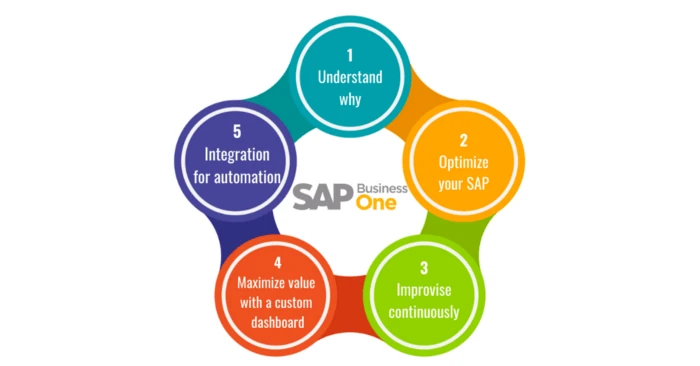Cost of SAP Business One
People often inquire about the cost of implementing SAP Business One in a small or medium-sized business. After performing hundreds of SAP B1 implementations, our experts have come to the conclusion that the cost of SAP B1 is determined by how well a customer is prepared for implementation.
Since system implementation accounts for the majority of the cost, your company can keep track of how much it spends on SAP Business One by planning ahead of time before letting your SAP consulting partner in.
Before hiring an implementation partner, you should consider three high-impact cost factors: process documentation, data cleansing, and training.
Process Documentation
One of the benefits of a modern ERP system like SAP B1 is that it will assist organizations in standardizing information and operating procedures. At any point of the commodity value chain, SAP Business One strengthens process rules and removes workarounds. Surprisingly, B1 does not establish the criteria or processes; it is you who does.
By identifying the organisation principles and reinforcing them by processes and workflow guidelines, you must build and record them. Because only you know which criteria and procedures are vital to your success, your ERP consultant won’t be able to help you.
Consider executing process exceptions outside of the ERP setting to save even more on B1, but keep in mind that each new exception necessitates custom-built business logic and, in many cases, new workflows.
Don’t think you’ll need your implementing partner to build workflows from scratch if you have many industry-specific processes and knowledge specifications. There are numerous industry-specific add-ons to SAP B1 that expand the system’s flexibility and configurability well beyond its standard capabilities; using these solutions would reduce the cost of industry-specific customizations.
Finally, adding functionality to SAP B1 is easy, so keep costs low at first and add functionality as your needs change.
Data Cleansing
Even the most experienced ERP analyst has no way of knowing whether the data is correct or not; only the departmental teams would be able to distinguish between good and bad data. Before implementing your ERP system, you and your departmental teams must clean and format the data properly.
The following are examples of common junk data:
- Customer documents that are duplicates
- Product pages have blank fields.
- Orders that have been separated from customer records
- Generic products with no names
- Product codes that are no longer valid
- Price quotations that should have been removed because they were incorrect.
- Outside of the key legacy scheme, information is stored.
We recommend learning how to cleanse data well in advance of the system’s implementation because it takes time and effort.
Training
Training is a sensitive, critical, vital, basic, and required component of ERP implementation (get the picture?). You won’t get the full tactical and strategic advantages of SAP B1 until everybody is completely immersed in it. Fortunately, you won’t have to pay for SAP or your B1 partner to train anyone. Because of B1’s intuitive nature, many businesses use a “train the teacher” approach, which fits well in this situation.
When using this method, don’t presume that your super users will also be your trainers; they’re sometimes too busy as members of the core deployment/user testing team. Instead, find staff members who have more time but also have a good understanding of the programme and the ability to teach others.
Creating a training map is another way to cut training expenses. Determine who will be educated, what they will be taught, where they will be taught, and how they will be taught. Renting an off-site facility in different locations can be costly; can you save money by conducting training online?
Would you need special training for each location? By answering such questions, you would be able to find ways to save time, money, and aggregate preparation to the greatest extent possible. However, do not overlook the importance of thorough user training. Employees must feel at ease with the system as soon as it is operational.




